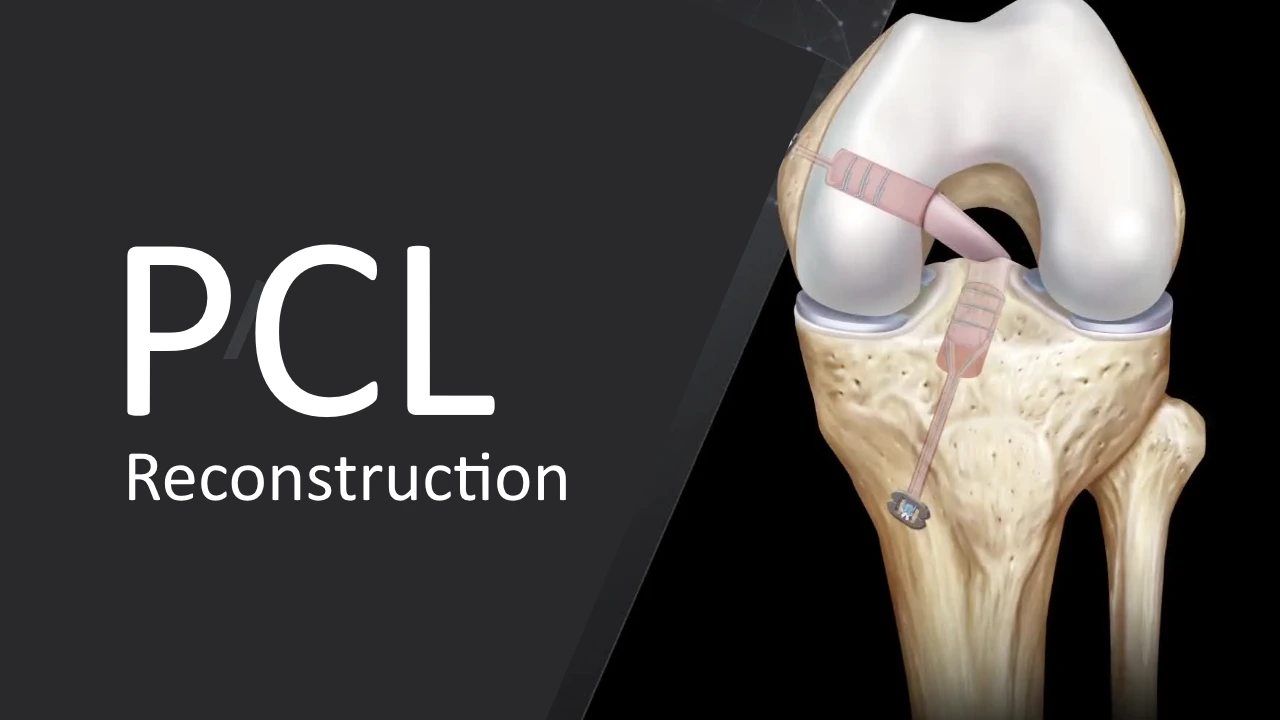PCL Reconstruction

PCL reconstruction is a surgical procedure to repair a torn posterior cruciate ligament (PCL), one of the four major ligaments in the knee that provides stability by preventing the tibia (shinbone) from moving too far backward. The PCL is less commonly injured than the ACL (anterior cruciate ligament) but often occurs from high-impact trauma, such as car accidents or sports injuries.
Causes of PCL Injury
PCL injuries are often the result of:
- Direct trauma to the front of the knee, such as in a car accident when the knee hits the dashboard.
- Falling on a bent knee with the shinbone pushed backward.
- Sports injuries in contact sports like football, rugby, or soccer.
- Hyperextension or over-stretching of the knee.
Symptoms of PCL Tear
- Pain and swelling in the knee, usually mild compared to an ACL tear.
- Instability in the knee, especially when walking downhill or on uneven surfaces.
- Difficulty bearing weight on the affected leg.
- Stiffness or reduced range of motion.
- A feeling of the knee "giving way."
Diagnosis
A doctor will perform a physical exam, including specific tests like the posterior drawer test, where the knee is bent at 90 degrees and the tibia is pushed backward to assess for instability. MRI scans are often used to confirm the extent of the PCL tear and to check for associated injuries to the meniscus, ACL, or other ligaments.
PCL Reconstruction Procedure
PCL reconstruction is usually necessary for grade III tears or if non-surgical treatment fails to restore knee stability. Surgery involves replacing the damaged ligament with a graft, typically taken from another part of the body or a donor.
Steps in the Procedure
- Preparation: PCL reconstruction is typically done using arthroscopy, a minimally invasive technique where a camera (arthroscope) and surgical instruments are inserted through small incisions.
- Graft Harvesting: A graft, usually from the hamstring tendon, patellar tendon, or a donor (allograft), is prepared to replace the damaged PCL.
- Torn PCL Removal: The surgeon removes the damaged or torn PCL tissue.
- Tunnel Creation: Small tunnels are drilled into the tibia and femur to thread the new graft into place.
- Graft Placement: The new graft is secured into the tunnels with screws or other fixation devices, recreating the position of the original PCL.
- Closing: The incisions are closed, and the knee is bandaged.
- The procedure typically lasts 1 to 2 hours, and most patients can go home the same day.
Recovery After PCL Reconstruction
- Recovery from PCL reconstruction surgery can take anywhere from 6 months to a year, depending on the severity of the injury and the rehabilitation program.
- Rest and Protection: Post-surgery, the knee will be immobilized in a brace to protect the graft. You will use crutches to avoid putting weight on the leg for a few weeks.
- Physical Therapy: Rehabilitation starts soon after surgery. Early exercises focus on reducing swelling, maintaining range of motion, and gently strengthening the muscles around the knee.
- Gradual Return to Activity: As the knee heals, physical therapy will include exercises to rebuild strength, balance, and stability. Running and high-impact sports can usually be resumed 6-9 months after surgery, depending on your progress.
Risks and Complications
While PCL reconstruction is generally successful, there are some risks associated with the surgery, including:
- Infection.
- Knee stiffness or limited range of motion.
- Graft failure, which may require a second surgery.
- Pain at the graft harvest site (if an autograft is used).
- Blood clots in the legs (deep vein thrombosis).
- Nerve or blood vessel damage, though this is rare.

